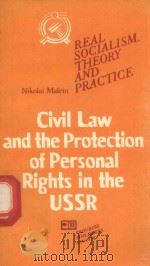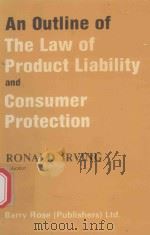《UNFAIR COMPETITION LAW THE PROTECTION OF INTECTUAL AND INDUSRIAL CREATIVITY》
| 作者 | ANSELM KAMPERMAN SADERS 编者 |
|---|---|
| 出版 | CLARENDON PRESS·OXFORD |
| 参考页数 | 232 |
| 出版时间 | 1997(求助前请核对) 目录预览 |
| ISBN号 | 0198764871 — 求助条款 |
| PDF编号 | 813700068(仅供预览,未存储实际文件) |
| 求助格式 | 扫描PDF(若分多册发行,每次仅能受理1册) |
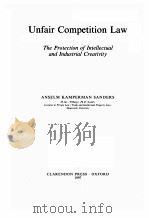
Introduction1
Methodology4
Chapter 1: Unfair Competition, its Legal Basis6
Introduction6
1 Unfair Competition, International Principles6
2 The Pre-emption Norm Examined11
2.1 Pre-emption Theory11
2.2 Pre-emption in the United States12
2.2.1 The Unfair Competition Doctrine at Common Law in the United States12
2.2.2 Federal Pre-emption15
2.3 Uniform Benelux Trade Mark Law, Harmonization Efforts and Reverse Pre-emption19
Conclusion22
3 Unfair Competition Law, its Present Status, its Legal Basis and the Pre-emption Norm22
3.1 Unfair Competition: Its Legal Basis22
3.2 The Civil Code Principles, Common Law, and Case Law Approach24
3.2.1 France24
3.2.2 The Netherlands32
3.2.3 Italy49
3.2.4 The United Kingdom52
3.2.5 The Civil Code Principle and Common Law Approach: Conclusion55
3.3 The Lex Specialis Approach55
3.3.1 Belgium55
3.3.2 Germany56
3.3.3 Austria64
3.3.4 Switzerland65
3.3.5 Luxembourg66
3.3.6 Spain67
3.3.7 Greece67
3.3.8 Portugal67
3.3.9 Denmark67
3.3.10 Sweden68
3.3.11 The Lex Specialis Approach: Conclusion68
3.4 The Concurrent Approach and Hybrids69
3.4.1 Canada's Common Law and Quebec's Civil Code69
3.4.2 South Africa: Passing off, Unlawful Competition, and Policy Considerations70
3.4.3 Israel75
Conclusion76
Chapter 2: Applying the General Principle in Particular Circumstances78
Introduction78
1 Unfair Competition: Finding Objective Criteria78
1.1 Property79
1.2 How to Establish the Legal Rule in Unfair Competition Cases86
1.3 The General Clause and Legal Method88
2 The General Clause and its Legal Framework93
2.1 Common Norms93
2.2 Transcending Common Norms94
Conclusion96
Chapter 3: The Economics of Pre-emption and the Abuse of a Dominant Position97
Introduction97
1 Unfair Competition and Economics97
2 The Economic Justification of Intellectual Property Rights100
3 Property Rules and Liability Rules104
4 Modification of the Outcome of Analogous Treatment106
5 Redefining Monopolies According to Economics107
5.1 From Dilution to Misappropriation109
5.2 A Sweat-of-the-Brow Example111
6 Misappropriation as the Third Paradigm of Intellectual Property?113
7 Market Failure and Parasitic Competition115
8 Monopoly Power—Abuse of a Dominant Position115
Conclusion120
Chapter 4: Shaping a New Action of Malign Competition121
Introduction121
1 Unjust Enrichment as the Basis for Unfair Competition121
1.1 Unjust Enrichment121
1.2 Restitutio123
1.3 Corrective Justice123
1.4 Restitutio and Unjust Enrichment124
2 Development of the Sources of Unjust Enrichment124
2.1 Unjust Enrichment in Germany125
2.2 Unjust Enrichment in France128
2.3 Unjust Enrichment in The Netherlands129
2.4 Unjust Enrichment in English Law130
3 Unjust Enrichment and Unfair Competition134
3.1 Legal Framework135
3.2 Contrast to and Augmentation of Passing Off136
3.3 Property Theories Abandoned136
4 Unjust Enrichment as a Basis: An Action in Malign Competition139
4.1 ‘Unjust'139
4.1.1 Restitution for Wrongs140
4.1.2 Restitution for Enrichment by Subtraction140
4.1.3 Non-voluntary Transfer140
4.1.4 Free Acceptance142
4.1.5 Passive Free Acceptance143
4.1.6 Active Free Acceptance144
4.2 Enrichment144
4.2.1 Free Acceptance144
4.2.2 Incontrovertible Benefit145
4.3 Detriment to the Plaintiff147
5 Unjust Enrichment and Unfair Competition149
5.1 Malign Competition, Recapitulation148
5.2 The Fallback on the Law of Obligations149
5.3 The Synthesis149
Conclusion152
Chapter 5: Cognizance in Malign Competition154
Introduction154
1 The Establishment of Choice through Knowledge in Free Acceptance154
2 Knowledge162
3 Unjust Enrichment and Trust163
4 Cognizance165
4.1 The Baden Criteria in England171
4.2 The Baden Criteria in England: Conclusion177
4.3 The Baden Criteria in New Zealand178
4.4 The Baden Criteria: Conclusion182
5 Cognizance in the Action against Malign Competition183
Conclusion184
Chapter 6: Cognizance in Intellectual Property Law186
Introduction186
1 Constructive Knowledge and Copyright186
Conclusion190
Chapter 7: Malign Competition: Action and Remedy191
Introduction to191
1 Malign Competition: From Liability to Remedy191
2 Malign Competition on a Case-by-case Basis195
2.1 Non-voluntary Transfer195
2.2 Active Free Acceptance197
3 Springboard Injunctions200
4 Malign Competition on a Case-by-case Basis; Further Examples202
4.1 Cadbury Schweppes and Pub Squash203
4.2 Mars206
4.3 Lego207
4.3.1 Malign Competition208
4.3.2 Pre-emption208
4.3.3 Economics of Entitlements209
4.3.4 Reciprocal Unjust Enrichment209
4.3.5 Abuse of a Dominant Position210
Conclusion211
Appendix213
Bibliography217
Index229
1997《UNFAIR COMPETITION LAW THE PROTECTION OF INTECTUAL AND INDUSRIAL CREATIVITY》由于是年代较久的资料都绝版了,几乎不可能购买到实物。如果大家为了学习确实需要,可向博主求助其电子版PDF文件(由ANSELM KAMPERMAN SADERS 1997 CLARENDON PRESS·OXFORD 出版的版本) 。对合法合规的求助,我会当即受理并将下载地址发送给你。
高度相关资料
-
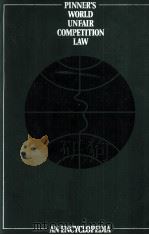
- PINNER'S WORLD UNFAIR COMPETITION LAW AN ENCYCLOPEDIA
- 1978 SIJTHOFF & NOORDHOFF
-

- Company law and competition
- 1989 W.H. Allen
-

- Civil Law and the Protection of Personal Rights in the USSR
- 1985 PROGRESS PUBLISHERS MOSCOW
-
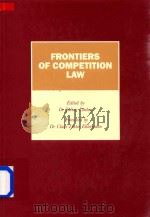
- Frontiers of Competition Law
- 1994 Wiley Chancery Law
-
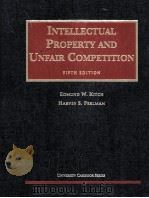
- INTELLECTUAL PROPERTY AND UNFAIR COMPETITION FIFTH EDITION
- 1998 FOUNDATION PRESS
-

- THE LAW OF CONSUMER PROTECTION AND FAIR TRADING 2ND EDITION
- 1982 BUTTERWORTHS
-

- THE GERMAN COMPETITION LAW LEGISLATION AND COMMENTARY
- 1983 KLUWER LAW & TAXATION PUBLISHERS
-

- COMPETITION LAW AND INDUSTRIAL POLICY IN THE EU
- 1997 CLARENDON PRESS·OXFORD
-

- EC COMPETITION LAW AND INTELLECTUAL PROPERTY RIGHTS THE REGULATION OF INNOVATION
- 1998 OXFORD UNIVERSITY PRESS
-
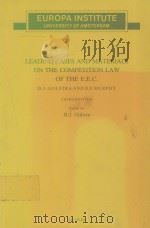
- LEADING CASES AND MATERIALS ON THE COMPETITION LAW OF THE E.E.C. THIRD EDITION
- 1984 KLUWER LAW AND TAXATION PUBLISHERS
-
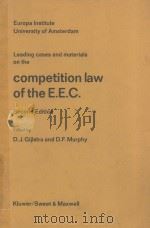
- LEADING CASES AND MATERIALS ON THE COMPETITION LAW OF THE E.E.C. SECOND EDITION
- 1979 KLUWER-DEVENTER/THE NETHERLANDS
-

- Competition law and policy in the EC and UK
- 1999 Cavendish
提示:百度云已更名为百度网盘(百度盘),天翼云盘、微盘下载地址……暂未提供。➥ PDF文字可复制化或转WORD

